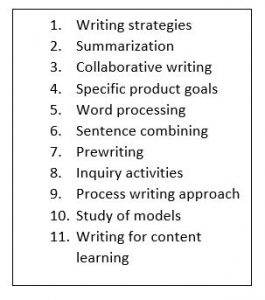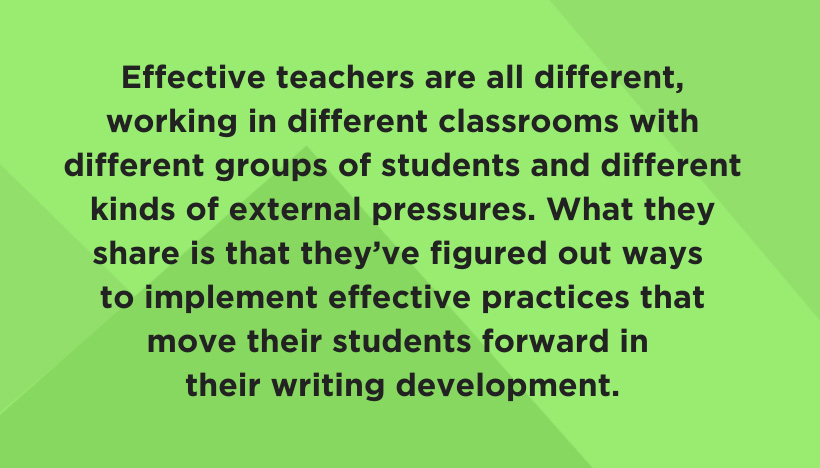This post was written by NCTE member Deborah Dean.
A recent visit to some junior high classrooms brought back memories. The clothing styles have changed some since my time of teaching junior high, and the technology is vastly different. But those students? They drew me into the past, to my former students in the junior high classes I taught.
There was Dan, who never wrote anything and sat slumped in his seat most of the time, no matter how I tried to engage him. Once, he tried to hit me with his book bag.
There was Matt. He was bright but unengaged, except for once when a writing task took his fancy: we were writing about processes, and he loved the challenge of writing about how to fool your teacher into thinking you were awake in class when you really weren’t. It was amazing.
There was Amy, who had suffered a trauma just before school started when a drug-crazed man held her and her mom hostage in their home for several hours. She was a quiet student who did her work, always on time and competently, until we wrote personal narratives. Then, she wrote so movingly of her experience, using it to write her way out of the trauma, that I have never forgotten it. Or her.
In my recent visits, though I sat in a classroom where I knew no names, I still saw students who reminded me of the question that had been prominent in my mind back when Dan and Matt and Amy were my students. It is a question that has driven me during my whole professional career, no matter what students are wearing or what technology they are using. The question mattered then and still matters today: What works?
What writing instruction works to help students develop as competent, engaged writers? What works to help all these different students with all their different needs and skills and situations? What works in classrooms stuffed with desks and students and too little time? What works in times of pandemic and online school and other challenges?
 In 2007, the Carnegie Foundation published the first meta-analysis of writing research in 25 years, and it named eleven instructional practices supported by research (see box). That was a good start to help me answer my question. I wrote about those practices in the first edition of What Works in Writing Instruction, mostly because I had tried many of them and hadn’t always seen the results that the research suggested I should see. I wanted to know why—and my own research helped me see that some effective practices are not easy to implement unless you dig down into them instead of engaging only the surface features.
In 2007, the Carnegie Foundation published the first meta-analysis of writing research in 25 years, and it named eleven instructional practices supported by research (see box). That was a good start to help me answer my question. I wrote about those practices in the first edition of What Works in Writing Instruction, mostly because I had tried many of them and hadn’t always seen the results that the research suggested I should see. I wanted to know why—and my own research helped me see that some effective practices are not easy to implement unless you dig down into them instead of engaging only the surface features.
But that 2007 report was based only on a certain kind of research, and even at that time the researchers acknowledged that there is more to effective writing instruction that hadn’t been uncovered in that initial research analysis. Over the next decade, researchers analyzed other kinds of studies. More than a decade later, when I looked at the additional research, I found answers that added clarity and detail to the initial picture of what works. I found a richer, fuller image of what classrooms should be and what teachers could do: more answers to my lifelong question.
The newly published second edition of What Works in Writing Instruction weaves together the initial findings with those that have been researched more recently and supports what the researchers concluded: that the most important factor in effective instruction is an engaged, informed teacher who knows how to adapt research-based practices to the needs of students in individual classrooms. In short, effective practices must be adapted. Fortunately, lots of really good teachers around the country have shared how they implement effective instruction. Through the classroom practices they share (and the practices I share in the book), teachers can see how they might adapt, shift, and revise to create more effective instructional practices in their own classrooms.
In this way, we see how teachers in a variety of classrooms build a writing community that supports developing writers and how they share their own enthusiasm for writing to help students build interest and engagement. We can see how different classrooms build a writer’s workshop that implements the writing process in individualized ways for classes that are both long and short. We see how teachers make choices about the kinds of texts they ask their students to study and write and how they use the collaborative nature of the classroom community to encourage students at all stages of writing development.
Effective teachers are all different, working in different classrooms with different groups of students and different kinds of external pressures. What they share is that they’ve figured out ways to implement effective practices that move their students forward in their writing development.
Their examples—their stories and their students’ work—can, in turn, give us confidence in our own professional judgment. They can help us know that we, too, might find answers to what works for writing instruction in our classrooms by implementing good principles in individual ways. And that can be a very satisfying answer to a perplexing question that all of us have asked.
 Deborah Dean, formerly a secondary English teacher, is a professor of English at Brigham Young University, where she teaches preservice and practicing teachers about writing instruction. She is the author of Strategic Writing: The Writing Process and Beyond in the Secondary English Classroom; Genre Theory: Teaching, Writing, and Being; What Works in Writing Instruction: Research and Practices, and the Quick Reference Guide (QRG) Teaching Grammar in the Secondary Classroom.
Deborah Dean, formerly a secondary English teacher, is a professor of English at Brigham Young University, where she teaches preservice and practicing teachers about writing instruction. She is the author of Strategic Writing: The Writing Process and Beyond in the Secondary English Classroom; Genre Theory: Teaching, Writing, and Being; What Works in Writing Instruction: Research and Practices, and the Quick Reference Guide (QRG) Teaching Grammar in the Secondary Classroom.
What Works in Writing Instruction, 2nd edition is now available from the NCTE store!
It is the policy of NCTE in all publications, including the Literacy & NCTE blog, to provide a forum for the open discussion of ideas concerning the content and the teaching of English and the language arts. Publicity accorded to any particular point of view does not imply endorsement by the Executive Committee, the Board of Directors, the staff, or the membership at large, except in announcements of policy, where such endorsement is clearly specified.

